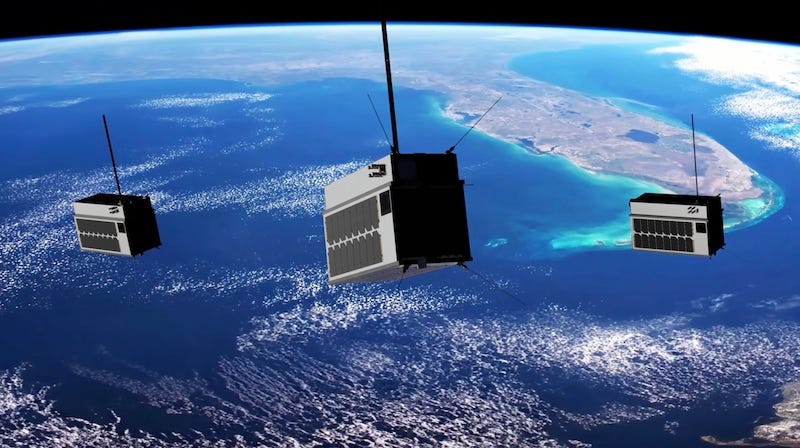"Pathfinder" Satellite Cluster Turns Five Years Old
Satellite Trio Continues to Collect Data Today
The three Pathfinder satellites launched by Hawkeye 360 on December 3, 2018, aboard a SpaceX Falcon 9 rocket out of Vandenberg Air Force Base in California have turned five years old. The mission pioneered using formation-flying satellites to offer commercial space-based RF detection over a broad range of frequencies.
"With 21 satellites on orbit today, we can provide high accuracy, low latency RF intelligence to our global customers."
Lorin Metzger, Hawkeye 360
UTIAS Space Flight Laboratory manufactured the satellites and remains an important technology partner. The Pathfinder satellites continue to collect data and independently pinpoint the geographical origin of RF signals – shedding light on previously undetected activities and unlocking new insights for humanitarian, environmental, defense, and national security applications. Given that HawkEye 360's Pathfinder mission brought a new source of RF information to market, the Smithsonian National Air and Space Museum will place a model Pathfinder satellite on permanent display in the renovated galleries expected to open in 2026.
"HawkEye 360 was the first to deliver this type of commercial data, and we continue to lead the market in RF data and analytics," said HawkEye 360 CEO John Serafini.
"The successful launch of our Pathfinder satellites marked a major milestone in our pursuit of becoming the world's premier commercial RF intelligence provider," said HawkEye 360 VP of Space Lorin Metzger. "Today, as we mark the fifth anniversary of that successful launch, it's amazing to reflect on all the accomplishments that we've achieved. With 21 satellites on orbit today, we can provide high accuracy, low latency RF intelligence to our global customers."
Over the last five years, HawkEye 360 has grown from 30 to 175 staff members and opened a 19,000 sq. ft. satellite manufacturing and RF engineering development facility in Herndon, Virginia. From the initial start with three satellites, the company now has a constellation of 21 advanced RF sensing satellites detecting data globally. The company's seven successful launch missions have significantly increased its collection bandwidth and revisit rates, reducing latency and expanding its frequency range to deliver the most accurate, actionable RF data available on the market.





